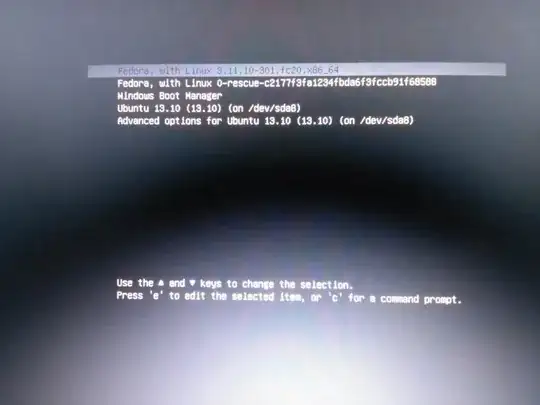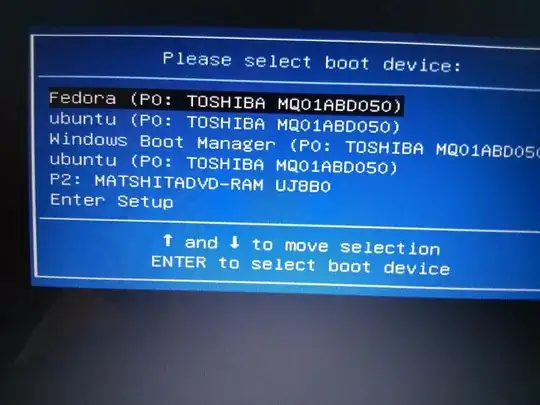I can't boot Ubuntu from gub menu after I install Fedora 20 (but I can boot Fedora and windows)

error: can't find command 'linux'
error: can't find command 'initrd'
But I can boot from here

Do you have any idea?
I can't boot Ubuntu from gub menu after I install Fedora 20 (but I can boot Fedora and windows)

error: can't find command 'linux'
error: can't find command 'initrd'
But I can boot from here

Do you have any idea?
Recently I was faced with this problem after updating the grub configuration file in Fedora.
To deal with it I had to edit the /boot/efi/EFI/fedora/grub.cfg file as follows:
replace all linux with linuxefi
replace all initrd with initrdefi
You can also press e while on the grub menu entry to edit it, and do the previous steps.
linux by linuxefi?
– Luís de Sousa
Apr 04 '14 at 12:36
linux and initrd commands.
– Autodidact
Mar 14 '17 at 13:09
grub.cfg file. Also in CentOS 7 that file is at /boot/efi/EFI/centos/grub.cfg.
– Chuck Claunch
Jun 02 '17 at 18:07
The Boot Repair utility, as user192938 suggests, may fix the problem. Another possibility is to install my rEFInd boot manager, which will take over as the primary boot program rather than have a "battle of the GRUBs," which is what you've got now. (Each distribution's GRUB is trying to be dominant, and as it happens, the Fedora GRUB has misconfigured the Ubuntu boot.) In fact, you can choose to install and manually configure any of several EFI boot loaders for Linux, so take your pick!